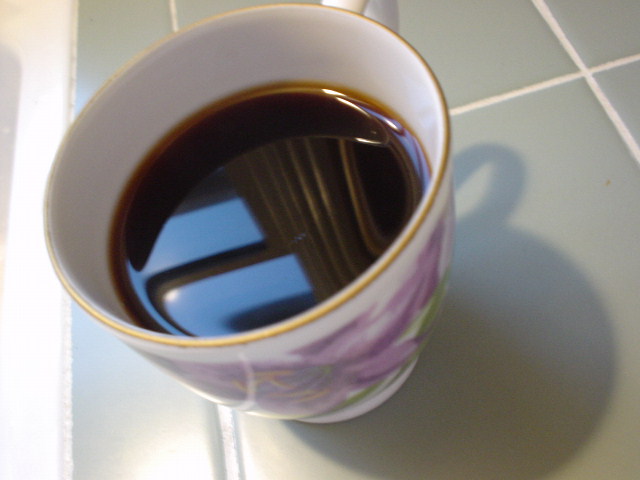Search
Main Styles of Chinese Calligraphy
Chinese Culture >> Chinese Food Articles >> Chinese Pu-erh Tea
Chinese Ancient Tea: Pu-erh Tea
The Chinese tea history of Pu-erh tea is fascinating. Pu-erh tea is one of the oldest type of tea in China with a rich history of over 1700 years that can be traced back to the Eastern Han Dynasty (25-220 AD). During it's height of popularity Pu-erh tea was freely traded and even used as money for the bartering of goods. Premium Pu-erh tea was offered as a tribute tea to the Emperor of China and to this day Pu-erh tea remains a highly valuable commodity. Pu-erh tea is revered in China as a traditional medicinal tea with many health benefits. It is regarded by tea connoisseurs as the King of Tea for it's unique flavor and aroma.
 Pu-erh tea also known as "puer" or "po lei" in Cantonese gets it's name from
the city Pu-erh in south western China, where the trade for Pu-erh tea was
conducted. Not far from Pu-erh city in the areas of Xishuangbanna and Simao,
south of Yunnan Province the cultivation and processing of Pu-erh tea was
carried out to this day. With elevations of up to 2000 meters, it is high up in
these mountains where the air is cool and crisp, amidst scenes of unspoiled
beauty and fertile lands that the tea plantations for this unique tea can be
found. The secrets for processing Pu-erh tea are carefully guarded and in the
past trespassers mistaken as spies have been known to be killed on private tea
plantations. To this day the tea secrets for Pu-erh production remains
ruthlessly guarded and it is only in China where genuine Pu-erh tea can be
produced.
Pu-erh tea also known as "puer" or "po lei" in Cantonese gets it's name from
the city Pu-erh in south western China, where the trade for Pu-erh tea was
conducted. Not far from Pu-erh city in the areas of Xishuangbanna and Simao,
south of Yunnan Province the cultivation and processing of Pu-erh tea was
carried out to this day. With elevations of up to 2000 meters, it is high up in
these mountains where the air is cool and crisp, amidst scenes of unspoiled
beauty and fertile lands that the tea plantations for this unique tea can be
found. The secrets for processing Pu-erh tea are carefully guarded and in the
past trespassers mistaken as spies have been known to be killed on private tea
plantations. To this day the tea secrets for Pu-erh production remains
ruthlessly guarded and it is only in China where genuine Pu-erh tea can be
produced.
Throughout Chinese tea history Pu-erh tea is well known for it's unique ability to undergo a post fermentation process designed for further aging. Like classic wines this aging process allows these fine teas to develop added complexity to its character while shedding it's harsh youthful elements. The active microbes living within the tea has lead Pu-erh tea to be known as the "Living Tea". This continuous evolution is very exciting for collectors of Pu-erh tea who likes to follow closely the transformation of their fine teas after each passing year. Many believe that it is from these active microbes that Pu-erh tea gets it's many health benefits and renown as a traditional medicinal tea with restorative powers.
A popular and insightful story about Pu-erh tea tells of a grandfather who
makes fine teas for his grandson to enjoy. Pu-erh teas are stored and left to
mature for decades like classic wines. These premium teas can fetch astronomical
prices at auctions and are worth their weight in gold, often times more.
Pu-erh tea has a wide spectrum of taste and aroma that is very compelling and at times uncompromising. Ranging from lightly floral, honey, heather and fruits to harsh peat, leather, organics, grass, tobacco, wood and deep earth the taste and aromas of these fine teas are exceptionally varied. The color of young Pu-erh tea can start from a golden yellow of summer hay before developing to a deep reddish brown reminiscent of the sunset after 30 years of aging. Black Pu-erh has an imposing aroma of heavy earth that is comparable to the sweet fragrance of mineral deposits emerging from deep within the forest floor after a heavy downpour. Good Pu-erh tea has excellent clarity and clean flavors that is warming to both the body and soul.
*For full illustrations accompanying this article see http://www.puerhcha.com/Chinese_Tea_History/Tea_History.htm
About the Author:
Varat Phong. is the founder of Puerh Cha - an exceptionally informative website that offers both knowledge and an opportunity to experience premium Pu-erh teas. Varat's passion for Pu-erh tea frequently takes him to China, Hong Kong and Taiwan in his search for rare and unique Pu-erh teas. For more information, articles and illustrations please visit the Puerh Cha website at www.puerhcha.com
Special Advertisement
